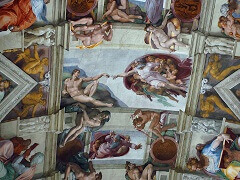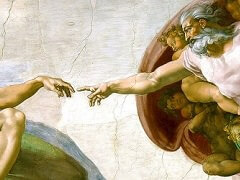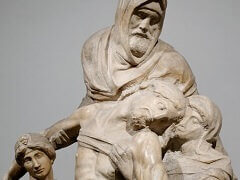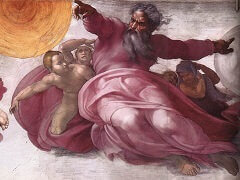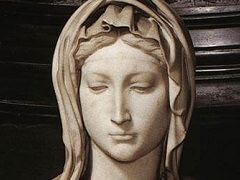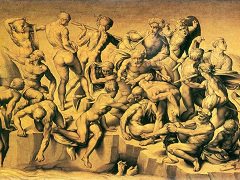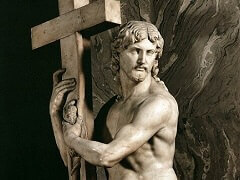Crucifix, by Michelangelo

The Crucifix theme, so dear to 15th-century Florentine sculptors starting from the striking opposition between the crucifixes by Brunelleschi and Donatello in the first twenty years of the century, had introduced the motif of perfect human proportions, expressed in the ideal canon for the nude male body, into art; Leonardo da Vinci and Francesco di Giorgio conferred visibility to this canon in the early 1490s by creating the famed icon of the Vitruvian Man. On the other hand, Savonarola had founded his own personal devotion and that of others on the image of Christ on the cross, stimulating the multiplication of medium to small size crucifixes for chapels or for domestic use.
Michelangelo, whom we know was also the author of many artworks destined for private use, at the time and in those circumstances might have made other wooden crucifixes, not unlike what was commonly being done in a number of Florentine workshops and especially by Benedetto da Maiano and Baccio da Montelupo.
A suggestion has relatively recently been put forth attributing to a twenty-year-old Michelangelo, in around 1495, a linden wood Crucifix which is now part of a Turinese collection, small enough to fit into a room. Viewed from the front, with Christ's head bent forwards and right, and his right leg flexed slightly and jutting out as if in reaction to the overlapping of the foot, he has a slender and delicate figure that recalls the Christ on the cross sculpture painted by Perugino, completed in April 1496 and placed in Santa Maria Maddalena de' Pazzi. The figure was carved from a wood block comprising pieces glued together. The purpose of a small wedge made in the left side of the head is to accentuate the extreme inclination: it is an original "pentimento" or structural rethinking which, in forcing the verisimilitude of the natural element, reveals a preference for pathetic expressiveness.
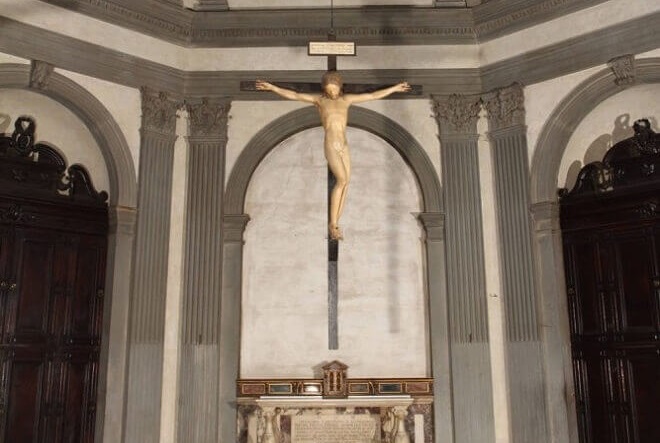
The frontal pose of the naked body does not exclude a slight rotation, punctually reflected by the anatomical modulation of the volumes, once again responding to the substantial correctness of both the structure and the surface. Like in the Santo Spirito Christ, the longer proportions are visually compensated for by the loincloth, whose purpose is to interrupt the figure halfway. If the "compression of the hips" and the "delicately stretched twisting of the limbs" foreshadow some of the features of the Pieta in the Vatican Basilica, begun in 1497 and completed in 1499,21 the animation of the torso by way of cavities and projections, creating vibrant planes and boldly chiaroscuroed features, suggests anticipations of the later and much larger marble David. The polychrome consists in considerably worn amber-hued flesh, and in the red-and-chestnut hair color.


